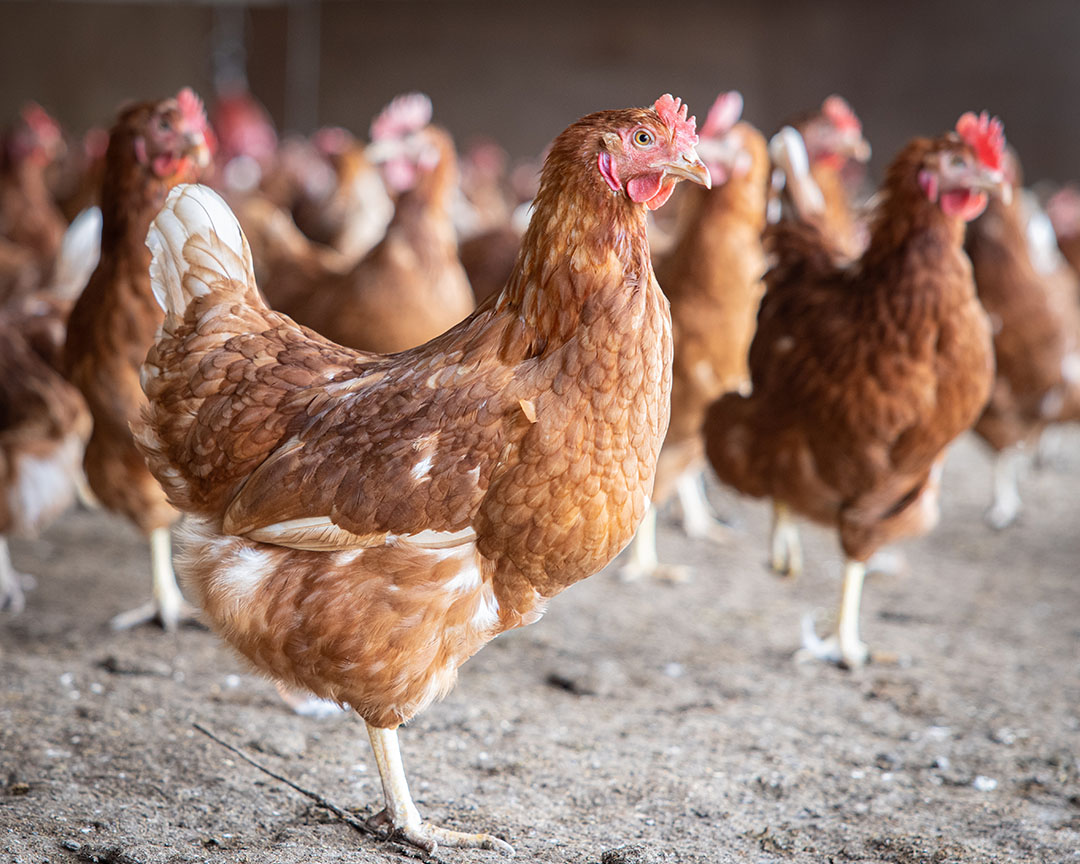Precision feeding applied to amino acids

Amino acids are one of the essential nutrients in livestock diets, which play a significant role in body function. Precision feeding techniques help to better estimate amino acids requirements and optimise animal performance.
Precision feeding is defined as a management concept that is based on the existence of in-field variability and involves the continuous estimation of nutrient requirements based on the status of each animal and patterns of feed intake and growth to provide the right amount of tailored feed at the right time.
Precision feeding techniques can be an efficient approach to improving nutrient efficiency while ensuring the sustainability of feeding livestock the required amino acids.
Amino acids – essential nutrients
Amino acids − one of the essential nutrients in livestock diets − are the building blocks of proteins and play an important role in vital processes such as cell and hormone synthesis, muscle and tissue repair, boosting the immune system, functioning of neurotransmitter and enzymes, and other biological processes. The metabolic body weight of an animal, the endogenous amino acid losses from the gut and dietary factors, such as dry matter intake, are the main contributors to maintenance amino acid requirements.
There are mathematical models that can be used to estimate the daily amino acid requirements of livestock and the optimal dietary concentrations for each individual in the herd according to body weight and actual growth and feed intake patterns. The appropriate model is a combination of empirical and knowledge-based mechanistic components.
Empirical model components
In the empirical model, daily feed intake and daily body weight gain are estimated for each individual animal using empirical equations that are calibrated on a daily basis from individual animal information. The objective of this approach is to follow in real time dynamic average feed intake and body weight trajectories of each animal without considering short-term variation over time and temporary drops in performance.
Mechanistic model components
In the mechanistic model, body weight, daily feed intake and daily body weight gain are the driving variables. The objective of this approach is to estimate the amino acid requirements of each individual animal and the optimal concentration of amino acids that should be provided in the tailored diet.
Implementing precision feeding
The proper implementation of precision feeding in livestock production systems is based on factors such as proper assessment of the nutritional potential of feed ingredients, continuous sensing of process responses such as body weight, daily feed intake and daily body weight gain, the application of automatic equipment at an appropriate frequency and adjusted with information from process controllers, determination of the exact nutrients requirements, formulation of premixes that limit the amount of excess nutrients, dietary supply adjustment and modification of nutrients concentration to match the nutritional requirements of each animal.

Practical on-farm application of precision feeding systems requires designing and developing automatic feeding systems to provide dietary quantity and composition adapted to the daily needs of each farm animal. Precision feeding systems require sensors, controllers, and actuators with robust and efficient management and control systems and with the capacity for complex data processing. Additionally, these systems must be able to meet the demand for a high number of processes to be executed cooperatively by all on-farm feeders in real-time.
Challenges and future perspective
Animals raised under farm conditions are frequently exposed to different environmental (stocking density, space allowance and temperature), nutritional (change in diet composition or raw material, mycotoxin contamination and some antinutritional factors) or social (animal mixing) stressors. This is why the models designed to estimate amino acid requirements in real-time need to be adjusted to deal with individuals exposed to stressors.
In addition, nutrient requirements vary in form and magnitude between individuals in a population. Using the average individual animal in a population to estimate nutritional requirements means that the needs of a large number of individuals will not be met and, as a result, the response of the animals will not be optimised.
Nutrients exceeding requirements
On the contrary, in animals that are receiving quantities of nutrients exceeding their requirements, nutrient efficiency is decreased, and nutrient excretion is enhanced. Furthermore, designing and developing on-farm precision feeding systems is time-consuming and expensive, and it is necessary to validate and test them prior to their actual use on farms.
Moreover, practical application of precision feeding systems can be difficult because it requires estimating the nutrient requirement of each animal in a short period after filtering and cleaning all the data collected by sensors. Likewise, automatic precision feeding systems are able to feed a limited number of animals, so a considerable number of feeding units are needed, depending on the total number of animals. Therefore, further research is necessary to resolve these challenges and to ensure the sustainability of livestock feeding systems.
Conclusion
In conclusion, the combined mathematical model can monitor the average feed intake and feed weight trajectory of each individual animal in real-time with good accuracy and it allows the estimation of the amino acid requirements of each animal and the optimal dietary amino acid concentrations by considering the changes in animal feed intake and growth patterns.
In addition, on-farm application of precision feeding systems requires the design of new and complex equipment which presents significant challenges relating to the complexity, reliability, cost-effectiveness of the design process and its testing and validation. Integrating a framework in the precision feeding system that makes it possible to identify and estimate amino acid requirements for individuals with atypical feed intake patterns is the next step towards a more efficient approach on commercial farms.











